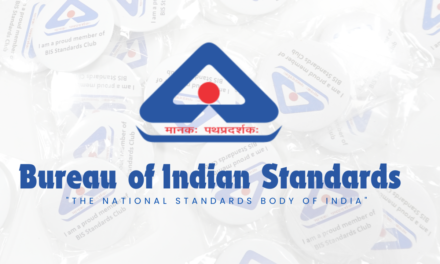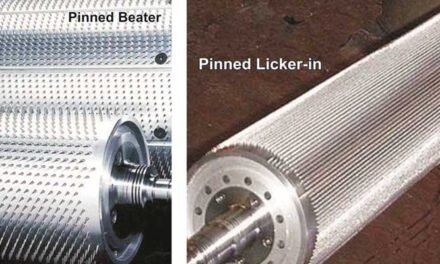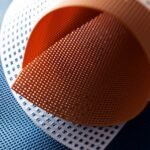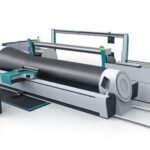What are the biggest challenges faced by manufacturers in coating fabrics, such as achieving uniformity, maintaining adhesion, or managing costs, and what are the latest innovations to overcome these hurdles?
Manufacturers in the textile and fabric-coating industries face several challenges when it comes to ensuring the quality, efficiency, and cost-effectiveness of their products. These challenges can range from technical difficulties in achieving consistent and uniform coatings to environmental concerns and the need for cost management. However, recent innovations are addressing these hurdles, helping manufacturers improve performance and sustainability while reducing costs.
1. Achieving Uniform Coating:
One of the biggest challenges in fabric coating is ensuring that the coating is applied uniformly across the entire fabric surface. Inconsistent coating can lead to defects like streaking, spotting, or patchy areas, which affect both the aesthetic appeal and functional properties of the finished fabric.
Challenges:
- Coating Thickness: Achieving a uniform layer of coating with consistent thickness can be difficult, especially with high-viscosity coatings such as PVC or silicone.
- Fabric Texture: Fabrics with different textures (e.g., woven, knitted, non-woven) may absorb coatings unevenly, leading to discrepancies in coating distribution.
- Surface Tension: Coatings may fail to adhere evenly if there are issues with surface tension or contaminants on the fabric, such as oils or dust particles.
Innovations to Overcome This:
- Advanced Coating Techniques: New high-precision coating technologies like gravure printing and slot-die coating help apply uniform layers of coatings, especially for thin and even applications. These technologies allow manufacturers to achieve more consistent control over coating thickness and distribution.
- Automated Coating Systems: The use of robotic arms and automated spray systems can apply coatings with high precision, improving uniformity and reducing the chances of human error.
- Nano-Coatings: Innovations in nanotechnology have led to the development of nano-coatings that can provide a more uniform surface finish while also enhancing properties like water resistance and UV protection. Nano-coatings can also bond more effectively with fabrics, helping maintain consistency.
2. Maintaining Adhesion:
Coating adhesion is critical for ensuring that the coated fabric maintains its integrity and durability during use, whether it’s in automotive upholstery, outdoor gear, or medical textiles. Poor adhesion can lead to peeling, flaking, or delamination over time.
Challenges:
- Surface Preparation: The fabric’s surface must be properly prepared before coating to ensure strong adhesion. If the fabric is too smooth or has an inappropriate finish, the coating may not bond effectively.
- Environmental Factors: Coatings can lose adhesion due to exposure to extreme temperature changes, UV radiation, or moisture, particularly in outdoor products like tents or rainwear.
- Incompatibility: Some coating materials may not adhere well to certain fabrics, especially synthetics like polypropylene or polyethylene, which are more resistant to bonding.
Innovations to Overcome This:
- Pre-treatment Technologies: To enhance adhesion, plasma treatment and corona discharge technologies are increasingly used to modify the fabric surface by increasing its surface energy, making it more receptive to coatings.
- Adhesion Promoters: Manufacturers now use adhesion promoters (chemical agents that improve bonding) in their coating formulations. These compounds help the coating adhere more effectively to different fabrics.
- Covalent Bonding Coatings: Some new adhesive coatings are designed to form covalent bonds with fabric fibers, which helps improve adhesion strength and prevent peeling or delamination over time.
- UV-Curable Coatings: UV-curable coatings are becoming popular because they allow for instant curing under UV light, resulting in stronger adhesion to fabrics without the need for heat.
3. Managing Costs:
Cost is a significant challenge for manufacturers, especially as they aim to provide high-quality coated fabrics while keeping production expenses under control. Coatings themselves, as well as the equipment and energy required for the coating process, can be costly.
Challenges:
- Raw Material Costs: The price of high-quality coating materials (such as PU, PVC, or silicone) can fluctuate, and eco-friendly or biodegradable coatings tend to be more expensive.
- Energy Consumption: Some coating processes, particularly those involving heat curing or drying ovens, are energy-intensive, leading to higher production costs.
- Waste and Scrap: Achieving a high-quality finish often requires waste management strategies to avoid excess material usage. Coating overspray and unused coatings can increase costs if not properly handled.
Innovations to Overcome This:
- Sustainable Coating Materials: Manufacturers are increasingly turning to bio-based or recycled coating materials (e.g., water-based PU, bio-based silicone) to reduce costs and environmental impact. These materials may reduce dependence on expensive, petroleum-based chemicals.
- Energy-Efficient Technologies: New low-energy and low-temperature curing technologies help reduce the energy required during the coating process. LED UV curing systems, for example, offer a more energy-efficient alternative to traditional UV curing lamps.
- Improved Material Efficiency: The use of precision coating techniques like slot-die coating or gravure coating minimizes waste by applying coatings more accurately, reducing the amount of material used in the process.
- Recycling Coatings: Some manufacturers are exploring closed-loop systems for recycling excess or unused coatings, which helps reduce waste and the cost of raw materials.
4. Managing Environmental Impact:
Environmental concerns related to the use of toxic solvents, volatile organic compounds (VOCs), and non-biodegradable coatings are driving the industry toward more sustainable and eco-friendly alternatives.
Challenges:
- Chemical Pollution: Traditional solvent-based coatings can release harmful VOCs into the air during production, contributing to air pollution and impacting workers’ health.
- Waste Disposal: Managing waste from coating processes (including excess chemicals and coated fabric scraps) can be difficult and costly.
- Regulations: Increasingly stringent environmental regulations are pushing manufacturers to invest in safer and greener technologies.
Innovations to Overcome This:
- Water-Based Coatings: The shift toward water-based coatings (which use water as a solvent instead of toxic chemicals) has gained momentum. These coatings are low in VOCs and more eco-friendly.
- Solvent-Free and Low-Solvent Coatings: Innovations in solvent-free coatings and low-VOC formulations are helping reduce the environmental impact of the coating process while still delivering high performance.
- Biodegradable Coatings: There is a growing trend toward biodegradable coatings made from natural or renewable sources (like plant-based oils and polymers), which break down more easily in the environment and have a lower carbon footprint.
5. Managing Speed and Scalability:
As demand for coated fabrics increases, manufacturers are facing pressure to speed up production without compromising quality.
Challenges:
- Production Time: Many coating processes, such as curing or drying, can take a significant amount of time, slowing down overall production.
- Scaling for Larger Orders: Scaling up production for large-volume orders can be difficult without investing in specialized equipment and automation.
Innovations to Overcome This:
- Faster Curing Systems: The development of fast-curing systems, such as UV curing and electron-beam curing, significantly reduces production time by instantly hardening coatings.
- Modular and Scalable Systems: Some manufacturers are investing in modular coating lines that can be scaled up or down depending on the volume, ensuring flexibility in meeting both small and large orders.
Manufacturers in the textile and fabric-coating industries face a range of challenges, from achieving uniform coatings and maintaining adhesion to managing costs and minimizing environmental impact. However, innovative technologies like precision coating, sustainable materials, low-energy systems, and eco-friendly formulations are helping to overcome these hurdles.







